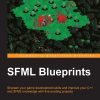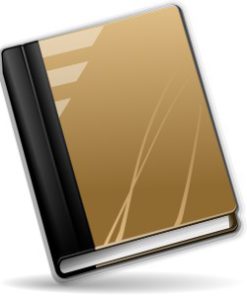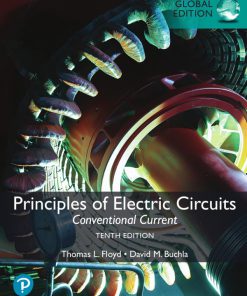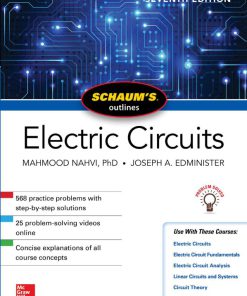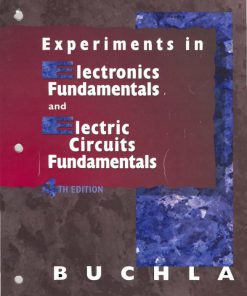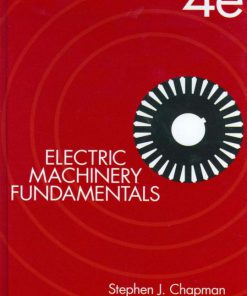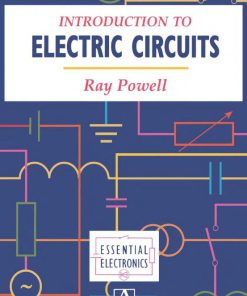Lessons in Electric Circuits Vol IV Digital 4th edition by Tony Kuphaldt B005D2ZA4G
$50.00 Original price was: $50.00.$25.00Current price is: $25.00.
Authors:”Tony R. Kuphaldt” , Author sort:Kuphaldt”, “Tony R. , Languages:Languages:eng
Lessons in Electric Circuits Vol IV Digital 4th edition by Tony Kuphaldt – Ebook PDF Instant Download/Delivery. B005D2ZA4G
Full download Lessons in Electric Circuits Vol IV Digital 4th edition after payment
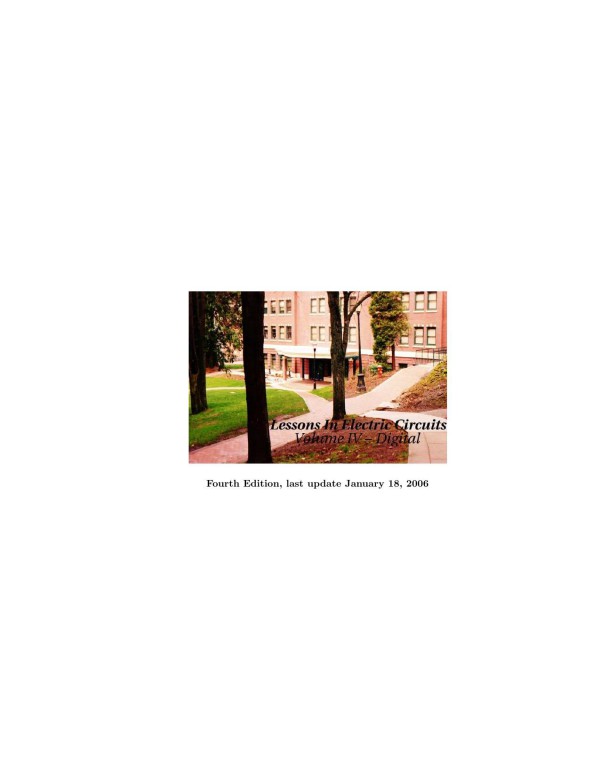
Product details:
ASIN : B005D2ZA4G
Author: Tony R. Kuphaldt
This book is published under the terms and conditions of the Creative Commons License. These terms and conditions allow for free copying, distribution, and/or modification of this document by the general public. The full Creative Commons License text is included in the last chapter. As an open and collaboratively developed text, this book is distributed in the hope that it will be useful, but WITHOUT ANY WARRANTY; without even the implied warranty of MERCHANTABILITY or FITNESS FOR A PARTICULAR PURPOSE. See the Creative Commons License for more details
Lessons in Electric Circuits Vol IV Digital 4th Table of contents:
1. NUMERATION SYSTEMS
1.1 Numbers and symbols
1.2 Systems of numeration
1.3 Decimal versus binary numeration
1.4 Octal and hexadecimal numeration
1.5 Octal and hexadecimal to decimal conversion
1.6 Conversion from decimal numeration
2. BINARY ARITHMETIC
2.1 Numbers versus numeration
2.2 Binary addition
2.3 Negative binary numbers
2.4 Subtraction
2.5 Overflow
2.6 Bit groupings
3. LOGIC GATES
3.1 Digital signals and gates
3.2 The NOT gate
3.3 The “buffer” gate
3.4 Multiple-input gates
3.5 TTL NAND and AND gates
3.6 TTL NOR and OR gates
3.7 CMOS gate circuitry
3.8 Special-output gates
3.9 Gate universality
3.10 Logic signal voltage levels
3.11 DIP gate packaging
3.12 Contributors
4. SWITCHES
4.1 Switch types
4.2 Switch contact design
4.3 Contact “normal” state and make/break sequence
4.4 Contact “bounce”
5. ELECTROMECHANICAL RELAYS
5.1 Relay construction
5.2 Contactors
5.3 Time-delay relays
5.4 Protective relays
5.5 Solid-state relays
6. LADDER LOGIC
6.1 “Ladder” diagrams
6.2 Digital logic functions
6.3 Permissive and interlock circuits
6.4 Motor control circuits
6.5 Fail-safe design
6.6 Programmable logic controllers
6.7 Contributors
7. BOOLEAN ALGEBRA
7.1 Introduction
7.2 Boolean arithmetic
7.3 Boolean algebraic identities
7.4 Boolean algebraic properties
7.5 Boolean rules for simplification
7.6 Circuit simplification examples
7.7 The Exclusive-OR function
7.8 DeMorgan’s Theorems
7.9 Converting truth tables into Boolean expressions
8. KARNAUGH MAPPING
8.1 Introduction
8.2 Venn diagrams and sets
8.3 Boolean Relationships on Venn Diagrams
8.4 Making a Venn diagram look like a Karnaugh map
8.5 Karnaugh maps, truth tables, and Boolean expressions
8.6 Logic simplification with Karnaugh maps
8.7 Larger 4-variable Karnaugh maps
8.8 Minterm vs maxterm solution
8.9 2 (sum) and II (product) notation
8.10 Don’t care cells in the Karnaugh map
8.11 Larger 5 & 6-variable Karnaugh maps
9. COMBINATIONAL LOGIC FUNCTIONS
9.1 Introduction
9.2 A Half-Adder
9.3 A Full-Adder
9.4 Decoder
9.5 Encoder
9.6 Demultiplexers
9.7 Multiplexers
9.8 Using multiple combinational circuits
10. MULTIVIBRATORS
10.1 Digital logic with feedback
10.2 The S-R latch
10.3 The gated S-R latch
10.4 The D latch
10.5 Edge-triggered latches: Flip-Flops
10.6 The J-K flip-flop
10.7 Asynchronous flip-flop inputs
10.8 Monostable multivibrators
11. SEQUENTIAL CIRCUITS
11.1 Binary count sequence
11.2 Asynchronous counters
11.3 Synchronous counters
11.4 Counter modulus
11.5 Finite State Machines
12. SHIFT REGISTERS
12.1 Introduction
12.2 Serial-in/serial-out shift register
12.3 Parallel-in, serial-out shift register
12.4 Serial-in, parallel-out shift register
12.5 Parallel-in, parallel-out, universal shift register
12.6 Ring counters
12.7 References
13. DIGITAL-ANALOG CONVERSION
13.1 Introduction
13.2 The R/2R DAC
13.3 The R/2R DAC (Repetition)
13.4 Flash ADC
13.5 Digital ramp ADC
13.6 Successive approximation ADC
13.7 Tracking ADC
13.8 Slope (integrating) ADC
13.9 Delta-Sigma (ΔΣ) ADC
13.10 Practical considerations of ADC circuits
14. DIGITAL COMMUNICATION
14.1 Introduction
14.2 Networks and busses
14.3 Data flow
14.4 Electrical signal types
14.5 Optical data communication
14.6 Network topology
14.7 Network protocols
14.8 Practical considerations
15. DIGITAL STORAGE (MEMORY)
15.1 Why digital?
15.2 Digital memory terms and concepts
15.3 Modern nonmechanical memory
15.4 Historical, nonmechanical memory technologies
15.5 Read-only memory
15.6 Memory with moving parts: “Drives”
16. PRINCIPLES OF DIGITAL COMPUTING
16.1 A binary adder
16.2 Look-up tables
16.3 Finite-state machines
16.4 Microprocessors
16.5 Microprocessor programming
People also search for Lessons in Electric Circuits Vol IV Digital 4th:
lessons in electric circuits volume 4 pdf
lessons in electric circuits volume 1
lessons in electric circuits volume 6 pdf
lessons in electric circuits volume 3

